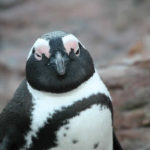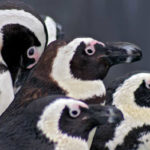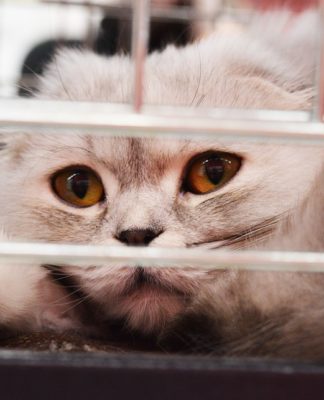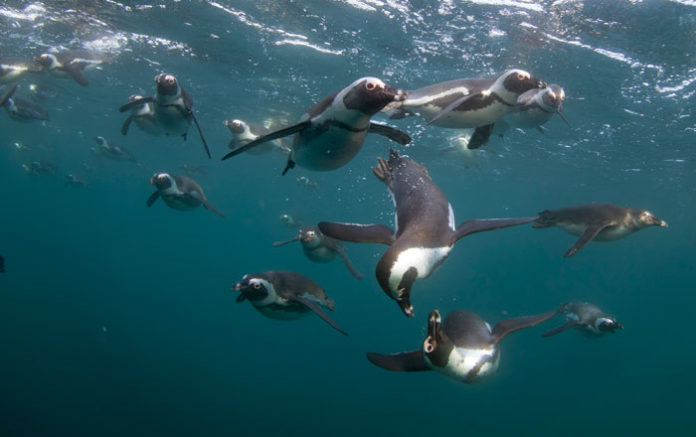
Along with its new Malayan tapir calf (read about that here: Baby on board: Minnesota Zoo’s Malayan tapir is expecting), the Minnesota Zoo is also welcoming another African penguin chick after this year’s breeding season. This little guy or gal (the sex of the penguin is still undetermined), will stay out of the spotlight for a while as the attentive penguin parents and human zookeeper parents keep a close eye on health and growth for the first few days.
The parents, Burner and Snickers, welcomed the healthy chick on November 21. Weight was 50.5 grams during the initial checkup.
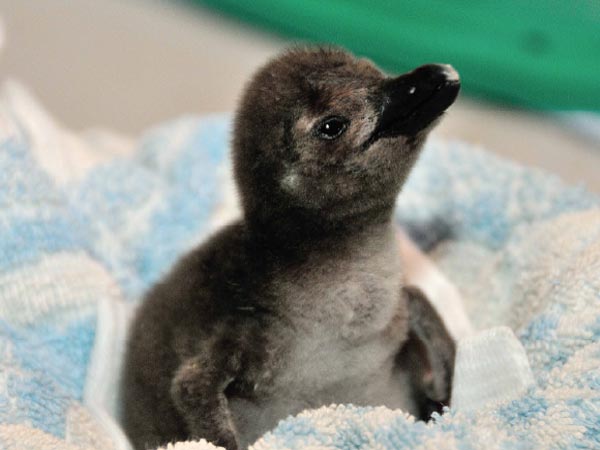
The Minnesota Zoo’s curator of Birds Jamie Toste made the announcement saying, “We are pleased to announce another successful breeding season with our African penguins. While the population of African penguins in North American zoos and aquariums is doing well, their wild counterparts in South Africa are facing the threat of extinction. Hatching chicks here at the Minnesota Zoo gives us the opportunity to share their story.”
From October to March, the nest boxes are opened at the Minnesota Zoo for the flock. Successful penguin pairs will generally lay one or two eggs during this time. The Minnesota Zoo has successfully hatched 21 African penguin chicks since opening the 3M Penguins of the African Coast habitat in 2011.
This success is incredibly important, as, as Toste mentioned above, the wild African penguin population has been on the decline since the beginning of the 20th century.
And an 80% population drop over the last 50 years.
African penguins are now listed as endangered, as the total population is now around roughly 25,000 pairs, down from the estimated 1.5 million there were at the beginning of last century.
There are many factors contributing to this decline. Many are man-made (e.g. oil spills and the introduction of domestic animals such as cats) as well as natural predators like cape fur seals and sharks, and an overall scarcity of necessary food resources. The two biggest threats continue to be oil pollution, and competition with commercial fisheries for the pelagic fish, such as sardines.
The Minnesota Zoo doesn’t just work domestically to help the African penguin: They also consistently support field work in South Africa. The Zoo’s primary penguin keeper, Eric Reece, is currently working overseas with the Southern African Foundation for the Conservation of Coastal Birds (SANCCOB). This nonprofit organization focuses on rescuing abandoned African penguin chicks, and injured, sick, and oiled seabirds. The Minnesota Zoo has sent several staff members over to share their expert skills and care for these rescued birds.
FUN FACTS ABOUT PENGUINS
- Full stomachs: Penguins eat fish equal to almost 15% of their body weight each day. For a 150-pound adult human, that would be like eating 22.5 pounds of food a day.
- Penguins are birds, feathers and all. Those feathers insulate them against frigid water. Their specialized wings help them swim (fly) efficiently in the ocean.
- Moving between the cold ocean depths and the hot beach, African penguins may experience a temperature shift of more than 70 degrees F.
- Keep up! Penguins swim through the water at up to 15 miles per hour— faster than many fish and Michael Phelps.
Read this next: Adult Night Out at the Minnesota Zoo



